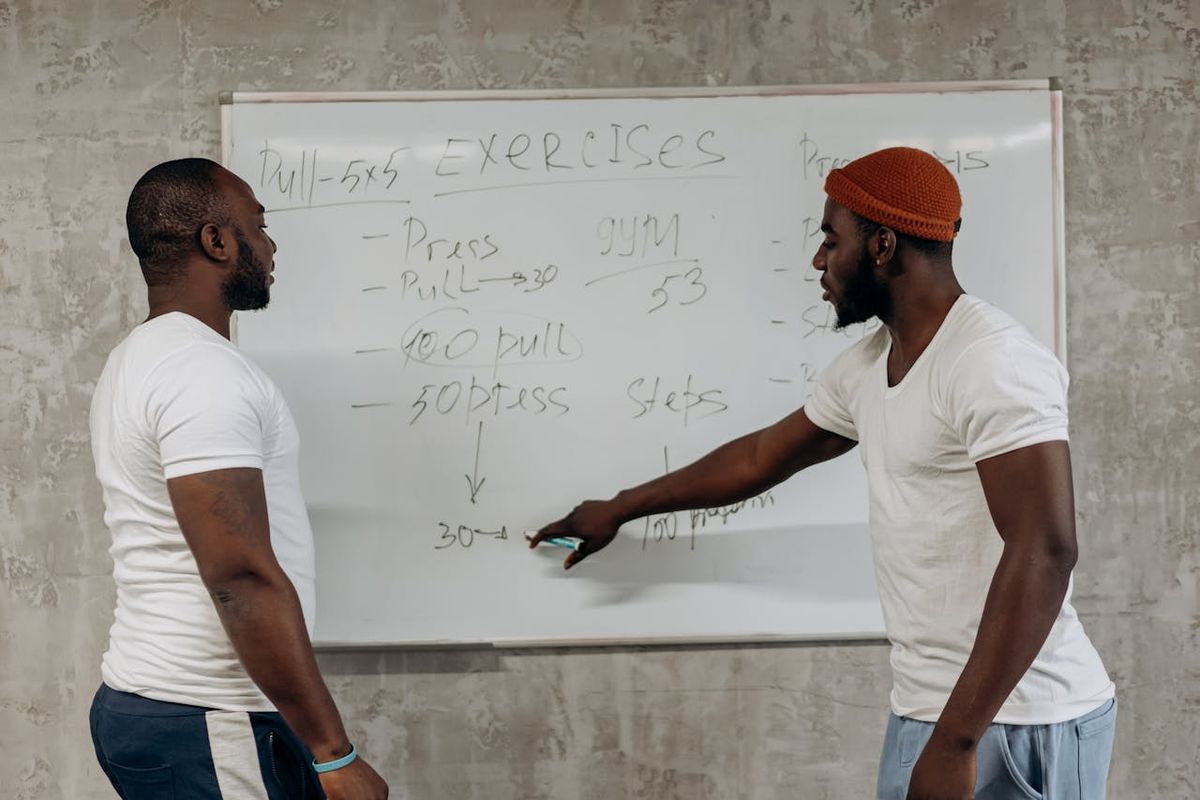Personalised Fitness Plans: Strategies for Success

Do your fitness clients all wear the same clothing and drink the same energy drinks? Do they all want to PR their bench press and compete in bodybuilding shows? Probably not. So, why should they all have the same fitness plans?
The country’s top personal trainers know that individualised fitness plans better address client needs, abilities, and goals. Personalising your fitness plans can also improve client retention, speed up their progress, and enhance client motivation.
Understanding Client Needs
Getting to know your client and understanding their needs is just as important as teaching them how to squat, bench, or deadlift. Rather than skipping straight to the weight room, walk your client through a thorough initial consultation to lay the foundation for a productive trainer-client relationship.
Start with a detailed fitness assessment that evaluates strength, flexibility, endurance, and mobility. Pair this with a health history review to identify potential risk factors or restrictions. This will help you set reasonable goals and identify any potential barriers to participation.
Actively listen to their input and analyse it from a wants vs. needs viewpoint. Many want immediate results but really need to adopt a healthier lifestyle. Pay attention to verbal and non-verbal cues to understand what clients say and what they might hesitate to express. Building trust through empathy and clear communication strengthens your ability to create a plan that feels genuinely personalised.
Goal-setting sessions are equally essential; clients need to remain committed. Once you help them find the right routine, set achievable, process-oriented goals and embrace subtle improvement changes. Explain how to integrate fitness into their schedules, leverage mobile apps for tracking, and adjust goals as needed.
Building Customisable Fitness Plans
Flexibility is key to designing effective fitness plans. Each of your clients has different fitness goals. Some want to run longer distances and hit PRs, while others just want to lose (or gain!) some weight. Resist the temptation to lean on a one-size-fits-all approach and opt for plans that adapt to client needs.
- For weight loss clients, emphasise activities that maximise calorie burn and incorporate resistance training to build lean muscle.
- Strength-building clients benefit from programmes centred on progressive overload techniques.
- Endurance-focused clients require a mix of aerobic exercises and stamina-building drills.
Using digital tools and templates can help you create and share periodised plans that motivate your clients. For instance, digital mind mapping tools are personalisable and use collaborative AI to help you visualise your client’s goals. It’s a great way to organise training phases and vary intensity over time. You and your clients can brainstorm together, use templates for inspiration, and create fitness plans that make sense.
Remember to prioritise variety. Rotating exercises, training modalities, and equipment keeps clients engaged while targeting their goals. A well-rounded plan and the right tools prevent boredom and keep you on top of their progress.
Adapting Plans for Progress
A personalised fitness plan isn’t static—it evolves as your client does. Regularly monitoring their performance and adjusting the plan keeps it aligned with their changing needs.
Feedback sessions are invaluable. Schedule regular check-ins to find out which exercises your clients love, and which exercises they dread. These conversations also provide an opportunity to celebrate achievements and refine goals. Involving clients in decision-making can be hugely motivating and will give them a sense of ownership over their fitness journey.
Technology can be a powerful ally in tracking progress: Fitness trackers, apps, and wearable devices provide real-time data on heart rate, calorie burn, and activity levels. Use this information to identify trends, measure progress, and pinpoint areas for improvement.
Progress tracking doesn’t have to be complicated. Let personal training software handle the hard work so you can focus on motivating your client. Mobile-friendly applications that integrate with wearable devices are perfect; choose ones with user-friendly dashboards, built-in recording and analysis tools, and data safety features.
Empowering Clients for Long-Term Success
The ultimate goal of a personalised fitness plan is to equip clients with the knowledge and habits needed for sustained health and fitness. Empowering them goes beyond crafting a plan—it involves education, encouragement, and ongoing client-trainer collaboration.
Personalised fitness plans are powerful tools for creating meaningful change in your clients’ lives. As a personal trainer, you can make a lasting impact by understanding client needs, building adaptable programmes, monitoring progress, and empowering them for the future.